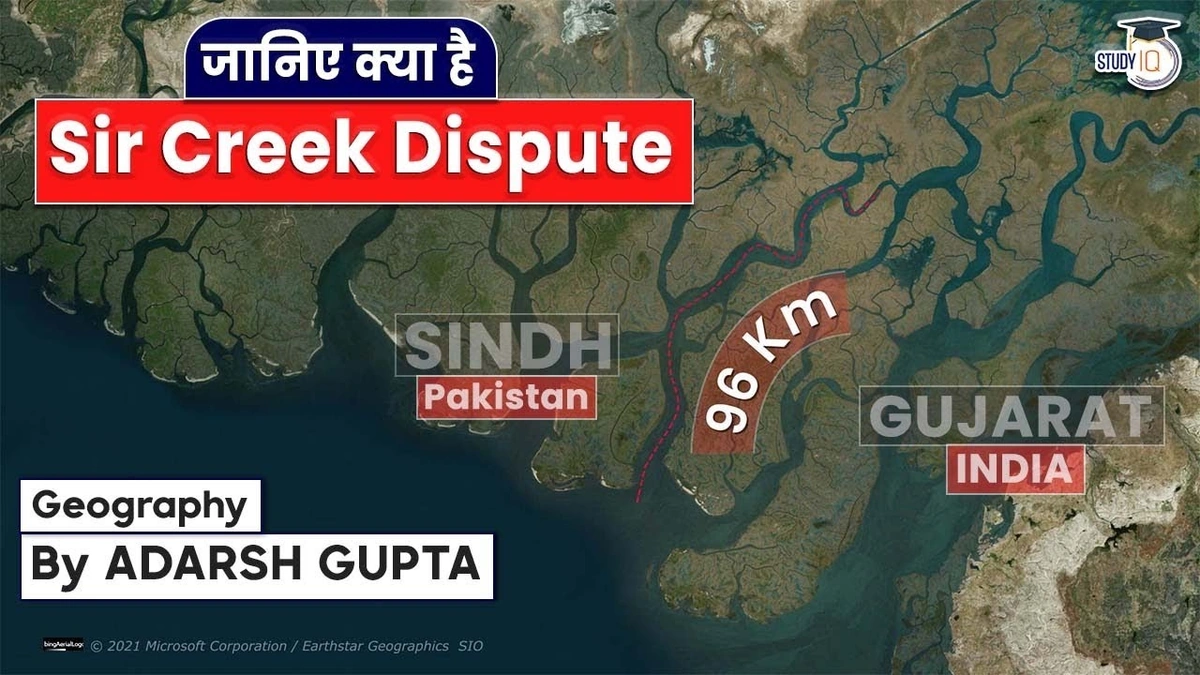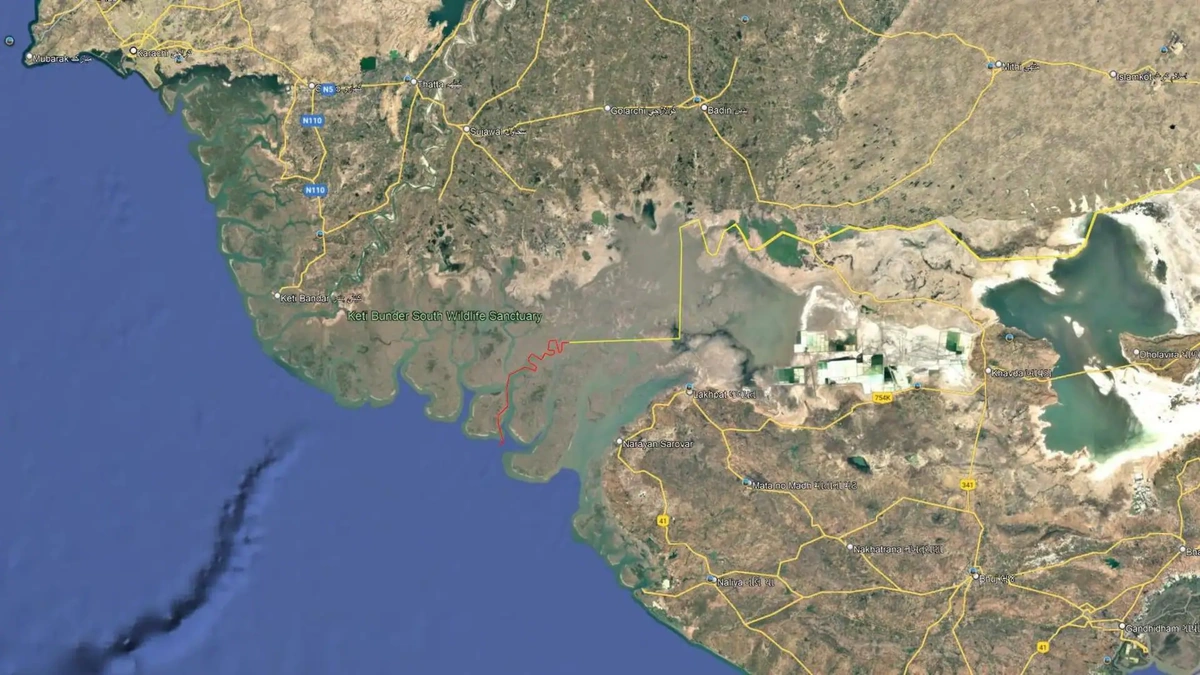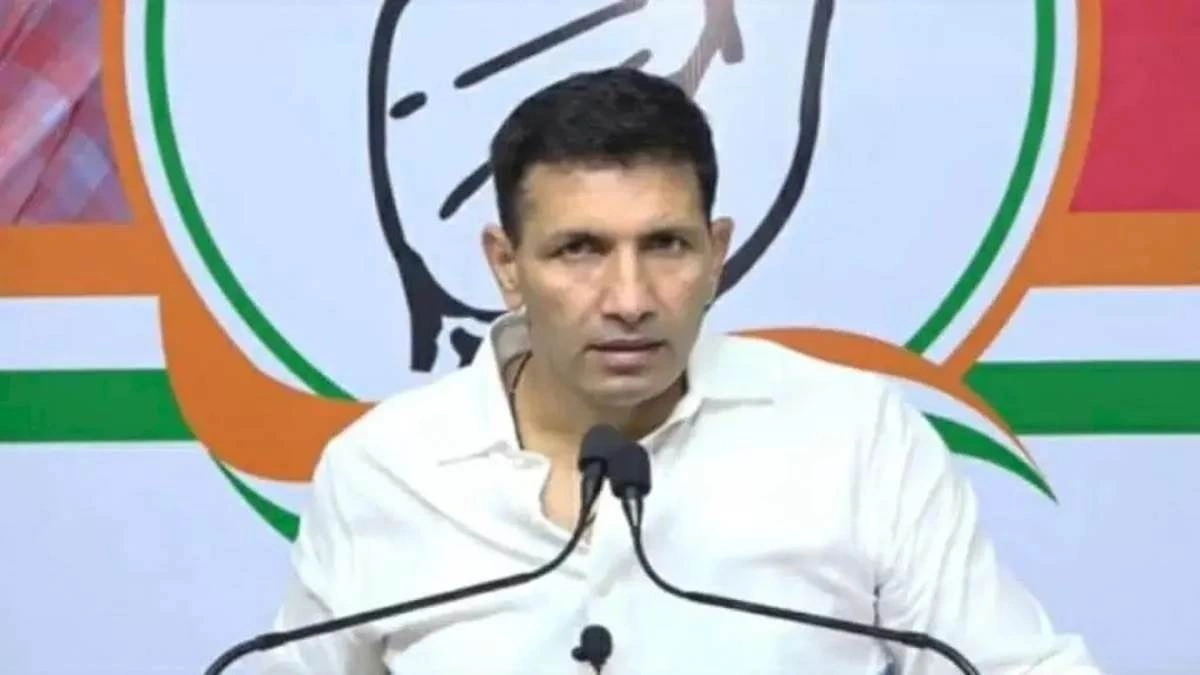Sir Creek | Why This Tiny Strip of Water Still Matters to India and Pakistan
Sir Creek. The name itself sounds like something out of a history book, doesn’t it? It’s a 96 km (60 mi) tidal estuary separating Gujarat from Sindh province in Pakistan. But here’s the thing – it’s so much more than just a line on a map. It’s a source of tension, a potential treasure trove, and a symbol of the complex relationship between India and Pakistan . Let’s be honest, when we think of Indo-Pak conflicts, the big things like Kashmir often overshadow smaller disputes. But Sir Creek? It has implications far beyond its size.
The “Why” Behind the Fuss | Understanding the Sir Creek Dispute

So, why all the fuss over a seemingly insignificant creek? The core of the problem lies in differing interpretations of the maritime boundary. India claims the entire creek based on the Thalweg Principle, which dictates that a boundary should follow the middle of the main navigable channel of a waterway. But, Pakistan disputes this, arguing that the boundary should lie along the eastern bank of the creek. I initially thought this was a simple cartographic disagreement, but then I realized it’s about a lot more than just lines on a map. What fascinates me is the potential resources beneath the seabed. We’re talking about potentially significant oil and gas reserves. That’s a pretty big deal for both nations.
And, there’s the fishing angle. Local fishermen from both sides venture into these waters. Unclear boundaries often lead to accidental crossings, resulting in arrests and the confiscation of boats. This is a frequent occurrence, and it impacts the livelihoods of people living in the coastal areas. The dispute isn’t just about governments; it’s about the people who depend on these waters. What’s more, resolving the maritime boundary here sets a precedent for resolving other maritime disputes, potentially unlocking larger areas for resource exploration and economic activity. This is why this issue is so crucial for both countries, especially considering the need to fuel their economies.
The Economic Implications | More Than Just Fish and Mud
We tend to think of border disputes in terms of territory and security. But let’s be real – the economic implications are huge. Think about it this way: clearly defined maritime boundaries allow for systematic exploration and exploitation of resources. Uncertainty, on the other hand, creates a disincentive for investment. No one wants to pour money into exploring an area that might be claimed by the other side tomorrow. This is a constraint that needs to be addressed. The one thing you absolutely must know is, resolution could pave the way for joint ventures or agreements on resource sharing. Such collaboration would lead to economic benefits for both sides. According to various reports, the seabed in this region holds a high possibility of having substantial amounts of mineral resources.
Furthermore, the Sir Creek region has potential for tourism and trade. Imagine if there was an amicable agreement to allow regulated tourism activities, benefitting the local communities.
Stalemate and the Way Forward
Despite numerous rounds of talks, a solution has remained elusive. The positions are entrenched, and domestic political considerations often complicate matters. But, what intrigues me is that both sides know a resolution is beneficial in the long run. So why the stalemate? I think one answer is trust, or the lack thereof. There’s the lingering shadow of past conflicts, and a deep-seated skepticism on both sides. As per various geopolitical analysts, the resolution depends on improving the overall relationship between the countries. It is, after all, interlinked.
But there are reasons to be hopeful. The fact that dialogue continues, even sporadically, is a positive sign. Both sides have, at least in principle, acknowledged the need for a peaceful resolution. But – and it’s a big but – translating that acknowledgment into concrete action requires political will and a willingness to compromise. Improving the relationship between India and Pakistan will foster mutual trust.
The Human Cost of the Dispute
It’s easy to get lost in the geopolitical complexities of the India Pakistan Sir Creek issue , but let’s not forget the human cost. Fishermen are often caught in the crossfire, arrested for inadvertently straying into disputed waters. Their families face immense hardship. These are real people whose lives are affected by this ongoing dispute. What fascinates me is the resilience they show. Despite the risks, they continue to venture out to sea, trying to eke out a living. One solution should focus on establishing a joint patrolling mechanism to ensure that the local fishermen are not harmed.
Consider this: resolving the dispute would not only unlock economic opportunities but also create a more stable and secure environment for the people living in the coastal areas. It would bring peace of mind to families who worry about their loved ones every time they go out to sea. Improving their livelihood options is as crucial as having cordial relationships between the two nations.
The dispute around the Indo-Pak border still needs to be addressed to improve the safety and economic stability of local fisherman.
FAQ | Understanding Sir Creek Simply
Frequently Asked Questions (FAQ)
What exactly is Sir Creek?
Sir Creek is a 96 km (60 mi) tidal estuary that separates Gujarat in India from Sindh province in Pakistan. It’s a disputed territory with potential oil and gas reserves.
Why is it a disputed territory?
India and Pakistan have differing interpretations of the maritime boundary. India claims the entire creek based on the Thalweg Principle, while Pakistan argues the boundary should lie along the eastern bank.
What are the main issues at stake?
Besides territorial claims, the dispute involves potential oil and gas resources, fishing rights, and the broader India-Pakistan relationship. An unresolved dispute adds uncertainty to maritime operations.
How does the dispute affect local fishermen?
Fishermen from both sides often get arrested for accidentally crossing into disputed waters, leading to hardship for their families. Establishing a joint patrolling mechanism could reduce the amount of cross-border arrests.
Has there been any progress in resolving the issue?
Numerous rounds of talks have been held, but a solution remains elusive due to entrenched positions and a lack of trust. Progresshas been slow.
What are the potential solutions?
Potential solutions include joint resource exploration, clearly demarcated maritime boundaries, and confidence-building measures to improve trust between the two countries.
In the end, Sir Creek is a microcosm of the larger India-Pakistan relationship – a story of missed opportunities, lingering mistrust, but also, perhaps, a glimmer of hope for a more peaceful and prosperous future. It’sa reminder that even seemingly small disputes can have significant implications for the lives of ordinary people. The hope is that the leaders of both nations realize this and work towards a lasting solution.













